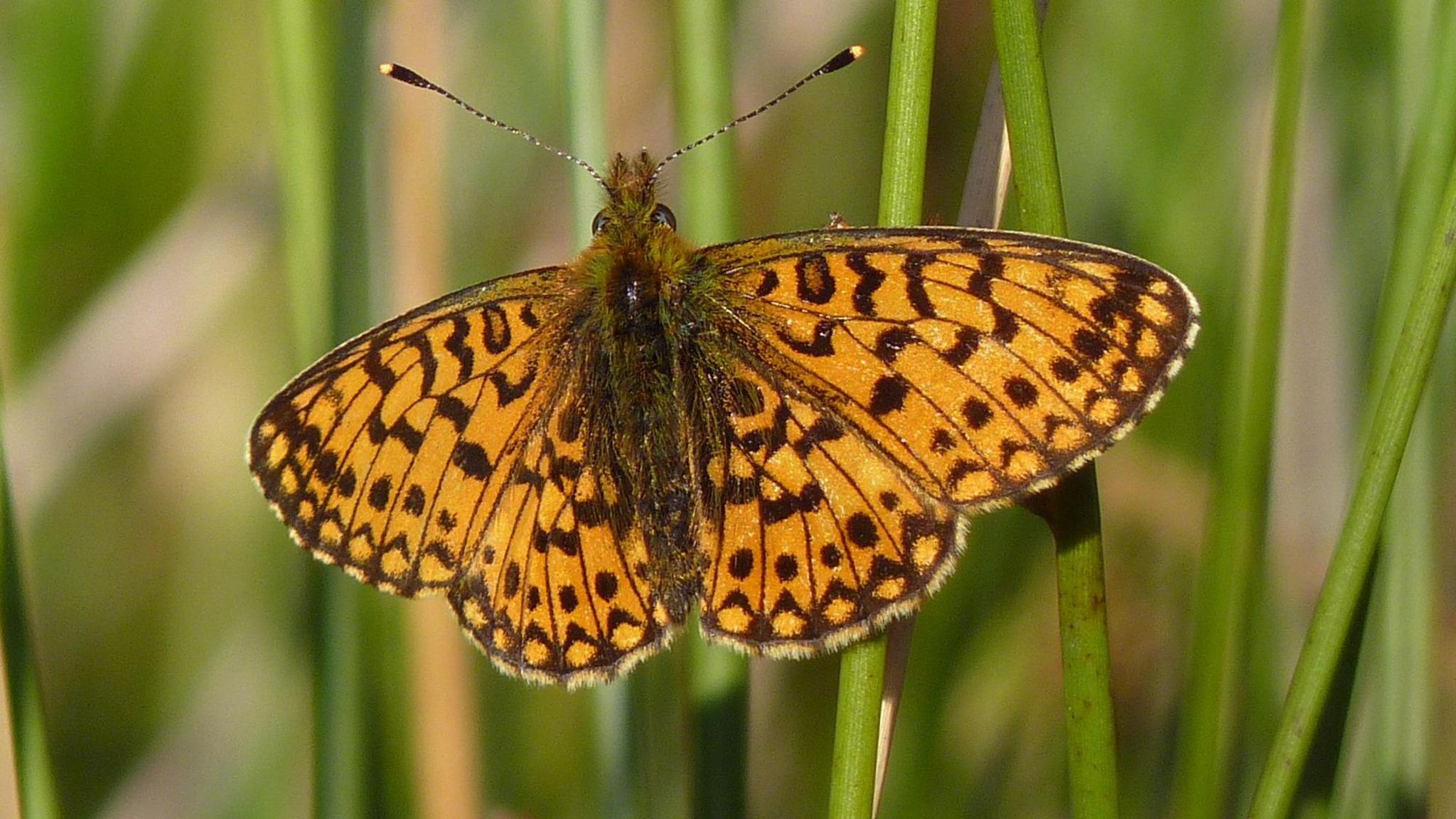Thousands of violets planted to help save rare butterfly

The small Pearl-bordered fritillary butterfly was once very widespread in England, but has declined rapidly recently
- Published
A new project is beginning, aiming to plant thousands of purple flowers, and hopefully boost the numbers of a rare butterfly.
The small Pearl-bordered Fritillary butterfly has faced severe declines in England recently.
But this project hopes to turn this around!
20,000 marsh violets will be planted by the National Trust and volunteers in the Shropshire Hills, on a scale that's never been seen before.
More butterfly stories
- Published3 April
- Published29 April
- Published5 June 2023
Why could planting these flowers help?
Some UK butterfly populations are declining - Shanequa's gone to find out why
Wild marsh violets are a favourite food source for caterpillars of the small Pearl-bordered fritillary butterfly.
Experts hope by boosting the numbers of these plants, it could then become a main breeding habitat for the species.
They're focussing the planting on areas where the butterflies have been spotted, but there aren't enough violets for the caterpillars to feed on.
Caroline Uff, an expert consultant to the National Trust, says: "Through this new mass planting and habitat restoration the plan is to give these butterflies the space to move and flourish."
Why are these butterflies in decline?
Volunteers and National Trust workers will be aiming to plant tens of thousands of marsh violets
The small Pearl-bordered fritillary butterfly is one of four species the National Trust are particularly looking to help.
Scientists say that human activity, including habitat destruction and climate change, are behind the change in butterfly numbers.
This planting project is part of a wider aim to support rare wildlife including willow tits, hazel dormice and otters.
- Published21 June 2018
- Published3 April
- Published3 February 2023
